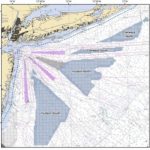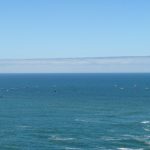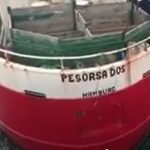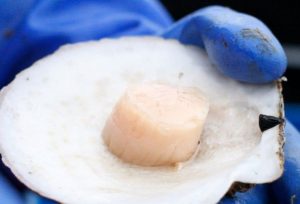Tag Archives: chum
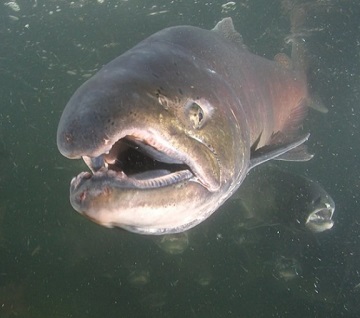
What salmon eat in the open ocean
After one to two years of munching on zooplankton in freshwater, young sockeye – or smolt – head for salt water to begin the next chapter of their anadromous lives, where there’s a whole different menu available. Dr. Katie Howard studies salmon diets in the open ocean and is an ocean fisheries scientist with the Alaska Department of Fish and Game. “The sockeye, pink and chum, eat a pretty diverse array of invertebrates and fish,” she said. “And the amount that their diets overlap or don’t overlap, is really dependent on where they are.” Howard calls these three species of salmon generalists; for the most part, they’ll eat whatever is available to them. But she says chinook, or king salmon, choose different marine meals. “Chinook tend to focus more on fish and squid. But, which fish and which squid really depends on where they are and what’s available,” she said. >click to read< 11:08

Prince William Sound coho, chum, sockeye harvests still rising
Even as the 2020 season is winding down, the catch of coho, chum and sockeye salmon is rising in Prince William Sound. Preliminary statewide harvest numbers compiled by the Alaska Department of Fish and Game showed that as of Wednesday, Sept. 2, the commercial catch for Prince William Sound had reached 24.3 million salmon, including some 21.3 pink, 1.9 million chum, 937,000 sockeye, 130,000 coho and 4,000 Chinook. The latest figures showed a boost of 95,000 humpies, 30,000 coho and 1,000 sockeyes since ADF&G’s Sept. 1 preliminary report. The Copper River District meanwhile was open for a 24-hour commercial fishing period on Thursday, Sept. 3. >click to read< 19:12

Alaska’s wild salmon are getting smaller
For years, people in Alaska have been noticing that wild salmon were getting smaller, but the reasons have been unclear. In the new study, published August 19 in Nature Communications, researchers compiled and analyzed data collected over six decades (1957 to 2018) from 12.5 million fish by the Alaska Department of Fish and Game. This unprecedented dataset enabled them to see patterns of body size changes for four species of salmon, Chinook, chum, coho, and sockeye, across all regions of Alaska. The results showed that the decreases in body size are primarily due to salmon returning to their spawning grounds at younger ages than they have in the past. >click to read< 11:24
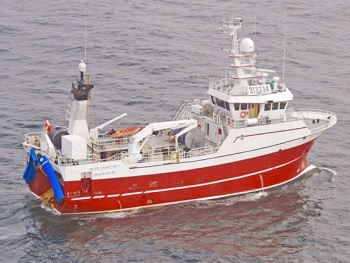
A research expedition returning to Victoria puzzled by a no-show of the fish after an initial big haul
“It is a little difficult for people to accept that scientifically, no catch is sometimes as important as large catches. I think this is the case here,” said Richard Beamish, who is organizing the $1.45-million expedition with fellow B.C. scientist Brian Riddell. “We had relatively large catches of pink, chum and coho early in the survey and there were no salmon in the same area a few weeks later.” It is clear that there are probably large schools of species such as coho that are moving over large areas in response to some factor, Beamish said. The chartered trawler Pacific Legacy No. 1 left Victoria on March 11, headed up to the southern part of the Gulf of Alaska and fished off Dixon Entrance. On Friday, it was 513 miles off Cape Beale, west of Ucluelet. The team expects to return to Victoria on Tuesday. >click to read< 10:32

Durango anglers set to head to Alaska for salmon run
The Copper River season takes off mid-May with the king salmon run.,,, A month later, further southeast, Eric Macias and his crew will board the 58-foot Silver Wave, named after a shoal of shimmering coho. It also shares its name with the fish company that sells salmon in filets and cans in Southwest Colorado that Macias and his partner, MJ Carroll, run. “We come in at the end of the king run,” Macias said. “I’m a seiner, so I have a bigger boat, a bigger crew, and I catch a bigger volume of fish at one time.”>click to read<15:30
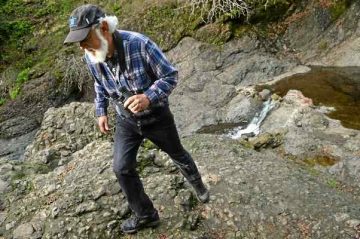
Lagunitas Creek gets odd visitor: pink salmon
A fish species rarely seen south of Washington state has turned up more than 700 miles away in Lagunitas Creek, part of what has been dubbed a strange beginning to the spawning season. In recent years attention on the Lagunitas Creek watershed has been focused on federally endangered coho salmon and threatened steelhead trout, with efforts made to restore habitat to help those fish. The fish come to the Marin watershed from the ocean each year to spawn. But this year the attention has been on two other species, which have made surprising appearances. click here to read the story 11:36
What became of the Yukon kings? An in-river look




































